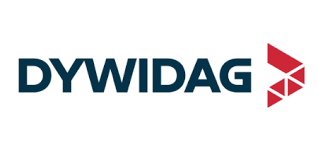Sesame Seeds Market Report
Published Date: 02 June 2025 | Report Code: sesame-seeds
Sesame Seeds Market Size, Share, Industry Trends and Forecast to 2033
This report provides a comprehensive analysis of the global sesame seeds market, including market dynamics, regional insights, segmentation, and future trends from 2023 to 2033.
| Metric | Value |
|---|---|
| Study Period | 2023 - 2033 |
| 2023 Market Size | $4.50 Billion |
| CAGR (2023-2033) | 6.2% |
| 2033 Market Size | $8.34 Billion |
| Top Companies | Olam International, Sunnyside Foods, Archana Industries |
| Last Modified Date | 02 June 2025 |
Sesame Seeds Market Report (2023 - 2033)
Sesame Seeds Market Overview
Customize Sesame Seeds Market Report market research report
- ✔ Get in-depth analysis of Sesame Seeds market size, growth, and forecasts.
- ✔ Understand Sesame Seeds's regional dynamics and industry-specific trends.
- ✔ Identify potential applications, end-user demand, and growth segments in Sesame Seeds
What is the Market Size & CAGR of Sesame Seeds market in 2023?
Sesame Seeds Industry Analysis
Sesame Seeds Market Segmentation and Scope
Tell us your focus area and get a customized research report.
Sesame Seeds Market Analysis Report by Region
Europe Sesame Seeds Market Report:
The European market is expected to grow from $1.09 billion in 2023 to $2.02 billion by 2033. The demand is driven by the growing popularity of Mediterranean diets, which frequently utilize sesame seeds. Additionally, increased awareness of health benefits is spurring market growth.Asia Pacific Sesame Seeds Market Report:
In the Asia-Pacific region, the market for sesame seeds was valued at $0.89 billion in 2023 and is expected to reach $1.66 billion by 2033. Countries like India and China lead in both production and consumption, driven by traditional cuisine and growing health awareness.North America Sesame Seeds Market Report:
North America is anticipated to exhibit substantial growth, with the market size estimated at $1.75 billion in 2023, projected to reach $3.25 billion by 2033. The growth is propelled by health trends favoring natural ingredients in food products and an increasing number of food manufacturers incorporating sesame seeds.South America Sesame Seeds Market Report:
The South American market for sesame seeds is relatively smaller but is projected to grow from $0.36 billion in 2023 to $0.67 billion by 2033. Countries such as Brazil are increasing their production capacity to cater to international markets.Middle East & Africa Sesame Seeds Market Report:
The Middle East and Africa region is forecasted to grow from $0.40 billion in 2023 to $0.74 billion by 2033. Countries in this region utilize sesame seeds for traditional dishes, and there is a growing interest in exporting sesame products to international markets.Tell us your focus area and get a customized research report.
Sesame Seeds Market Analysis By Product
Global Sesame Seeds Market, By Product Market Analysis (2024 - 2033)
Hulled sesame seeds dominate the market, valued at $2.76 billion in 2023 and projected to increase to $5.12 billion by 2033. Unhulled seeds follow, with a current market of $1.17 billion expected to reach $2.17 billion. Sesame oil also contributes significantly, growing from $0.56 billion in 2023 to $1.05 billion by 2033.
Sesame Seeds Market Analysis By Application
Global Sesame Seeds Market, By Application Market Analysis (2024 - 2033)
The food industry accounts for the largest share of the market, making up $2.57 billion in 2023 and projected to grow to $4.77 billion by 2033. Cosmetics and pharmaceuticals follow, showcasing the versatility of sesame seeds in various applications, with the pharmaceutical segment expected to increase from $0.43 billion to $0.80 billion during the same period.
Sesame Seeds Market Analysis By Distribution Channel
Global Sesame Seeds Market, By Distribution Channel Market Analysis (2024 - 2033)
Online sales dominate with an expected market value growth from $3.66 billion in 2023 to $6.77 billion by 2033. Offline sales are also relevant but show slower growth, moving from $0.84 billion to $1.56 billion. These trends reflect changing consumer shopping behaviors toward digital platforms.
Sesame Seeds Market Analysis By End User
Global Sesame Seeds Market, By End-User Market Analysis (2024 - 2033)
Emerging economies make up a significant portion of users, starting at $3.66 billion in 2023 and expected to grow to $6.77 billion by 2033. In contrast, developed economies account for a smaller segment growing from $0.84 billion to $1.56 billion, indicating a focus on premium market segments.
Sesame Seeds Market Analysis By Region Application
Global Sesame Seeds Market, By Region (Exclusion) Market Analysis (2024 - 2033)
Regionally, Asia Pacific remains the largest market owing to its cultural significance for sesame seeds in cooking. Meanwhile, North America showcases significant growth due to health trends, while Europe is experiencing a rise in natural product demand, influencing overall market dynamics.
Sesame Seeds Market Trends and Future Forecast
Tell us your focus area and get a customized research report.
Global Market Leaders and Top Companies in Sesame Seeds Industry
Olam International:
A significant player in the agri-food sector, Olam sources, processes, and supplies sesame seeds globally, emphasizing sustainability and quality.Sunnyside Foods:
Known for its diverse range of sesame products, Sunnyside Foods has a strong presence in the North American market, capitalizing on the health benefits of sesame.Archana Industries:
An established distributor and producer of sesame seeds, Archana Industries plays a crucial role in the supply chain in Asia, focusing on organic products.We're grateful to work with incredible clients.









FAQs
What is the market size of Sesame Seeds?
The global sesame seeds market is valued at approximately $4.5 billion in 2023, with a projected growth rate of 6.2% CAGR over the next decade, expected to reach substantial values by 2033.
What are the key market players or companies in the Sesame Seeds industry?
Key players in the sesame seeds market include major agricultural firms and processors, which significantly contribute to the market's supply chain, innovation, and distribution across global markets.
What are the primary factors driving the growth in the Sesame Seeds industry?
Growth is driven by rising consumer awareness of the nutritional benefits of sesame seeds, increasing demand from food manufacturers, and expanding applications in cosmetics and pharmaceuticals.
Which region is the fastest Growing in the Sesame Seeds market?
The North American region is experiencing the fastest growth, projected to expand from $1.75 billion in 2023 to $3.25 billion by 2033, highlighting a robust demand trend.
Does ConsaInsights provide customized market report data for the Sesame Seeds industry?
Yes, ConsaInsights offers tailored market report data which can cater to specific research needs, providing unique insights into various segments and regional markets.
What deliverables can I expect from this Sesame Seeds market research project?
Deliverables typically include comprehensive market analysis reports, regional insights, competitive landscape assessments, and detailed segment data, ensuring a thorough understanding of market dynamics.
What are the market trends of Sesame Seeds?
Emerging trends include a shift towards organic sesame products, increased emphasis on health benefits, and growing online sales channels, indicating evolving consumer preferences.
